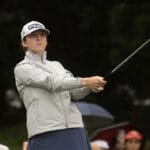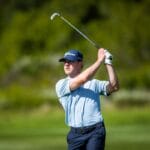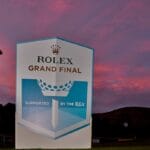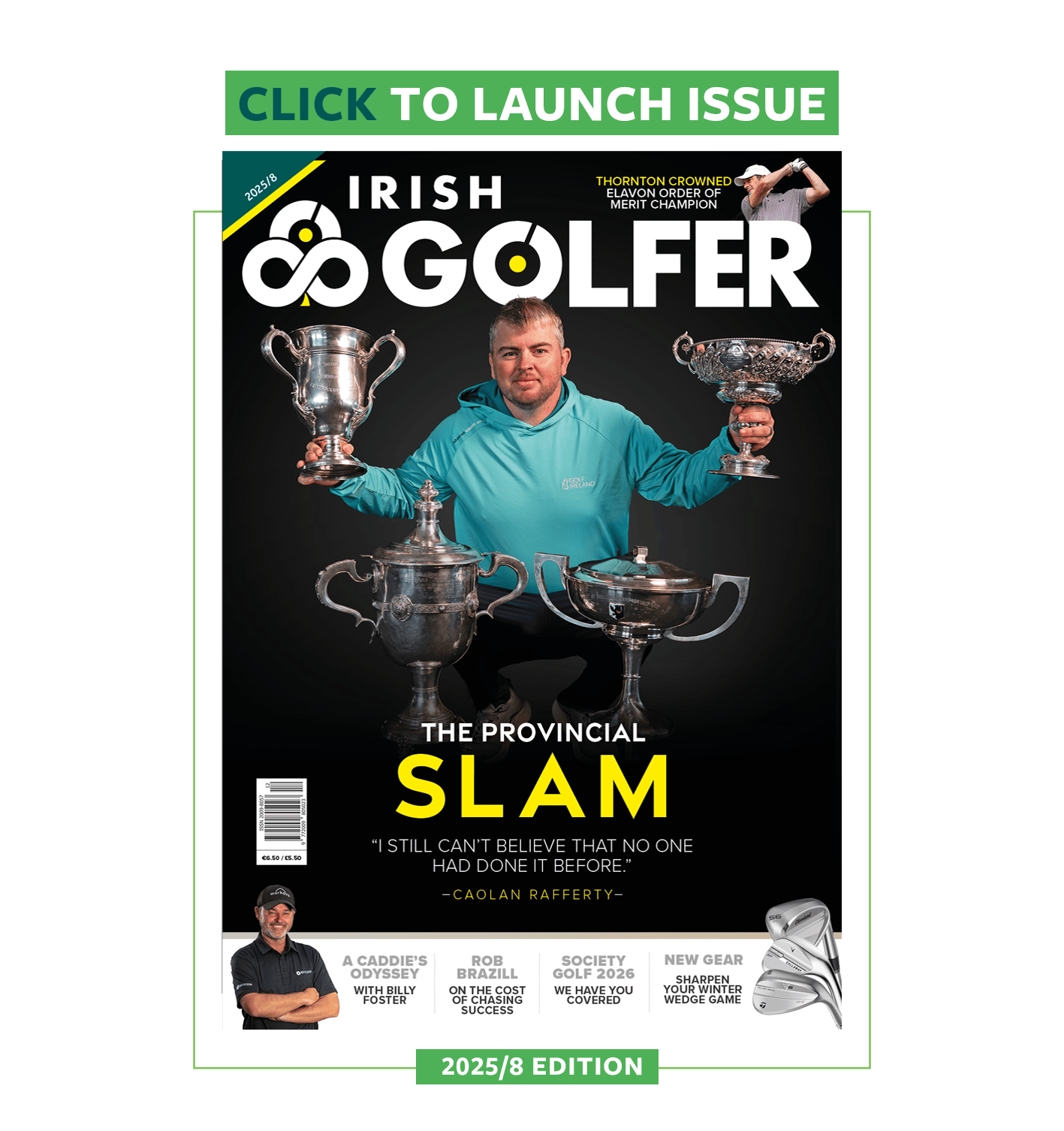The first time that The Open Championship was played outside Scotland, it was staged at Royal St. Georges Golf Club (Sandwich) in 1894. The record entry of 94 (about one third of them amateurs) encouraged the R&A to bring the championship south of the border to Royal Liverpool (Hoylake) three years later.
As twice-winner of The Amateur Championship over his home links, John Ball (who won the Amateur eight times) as well as gaining ownership of the famous Claret Jug as ‘Champion Golfer of the Year’ in 1890, was the red hot favourite to win again in 1897 over a newly-lengthened, Hoylake course measuring 6,090-yards. Considering the equipment and gutty ball used at the time, it was a formidable challenge.
Ball found the level of expectation too much to bear. Instead, his infamously edgy and chain-smoking clubmate, Harold Hilton, won with a score of 314. The technically superior Hilton was always better at stroke play than the dogged, unflinching, match fighter, Ball. Hilton managed four wins in The Amateur and two Open Championships as well as winning the US Amateur in 1911. Throw in three wins by Ball in the Irish Amateur Open and four wins by Hilton in ‘the Irish’ makes quite a list of achievement for one golf club to have in its ranks at the same time.
When The Open returned to Hoylake in 1902 many top professional and amateur golfers were still engaged in fighting the Boers in South Africa. A somewhat weakened field and an unmistakeable pall of sadness subdued the atmosphere. The horrific, battle-field death of Freddie Tait was on everybody’s mind. Tait had won The Amateur twice in 1896 and 1898, and had recorded ‘dozens’ of tournament victories, and back-to-back third place finishes in The Open in 1896 and 1897.
And yet, 1902 turned out to be a hugely significant championship for the future of the game because Laurie Aucterlonie, playing with the new Haskell wound rubber golf ball, which revealed itself to be much longer than the gutta percha, became the first golfer to win a U.S. Open with four rounds in the 70s. While, Sandy Herd (the only man in the field playing with a Haskell) won The Open Championship in the same year.
Naturally, the R&A and USGA became immediately concerned with the distance a well struck Haskell golf ball travelled. That year, the USGA announced that the ball could be no less than 1.62 inches in diameter and not more than 1.62 ounces in weight. In spite of the standardization, the ball manufacturers continued to find ways to make a golf ball go farther and have been doing so ever since.
No surprise to us today that the only player (Sandy Herd) in the 1902 field to play with ‘the Haskell’ won. With only 9-holes of practice, Herd noticed that he was hitting further than he ever hit a golf ball before. Playing with the same, one ball throughout the entire 72-holes, he won. One year later, everyone was using a Haskell. The familiar cry went up: The Haskell goes so far that inferior golfers are now a match for their betters. (Where did we hear that before!)
1907 saw the first overseas player win the Claret Jug, again at Hoylake. He was a French, former sardine fisherman, and caddy from Biarritz. Arnaud Massy’s long days at sea made him unfearful and relatively comfortable in the worst of gales when on land. He coped best in the hurricane force winds and lashing rain that marred the championship. The winning score of 312 was ‘miraculous’ in the circumstances.
In 1913, John Henry Taylor ‘shot’ 304 to beat the field by two shots per round (8-strokes). It was Taylor’s fifth and last Open win, having won previously in 1894, 1895, 1900 and 1909.
As soon as WW1 ended, the Americans invasion began. Jock Hutchinson, a Scotsman who had immigrated to Chicago, provided the example by returning home to win at St. Andrews in 1921. Between that year and 1934, every winner was an American. The flamboyant, Walter Hagen, recorded his second of his four wins at Hoylake in 1924. By then, Hagen had taken on the establishment and had embarrassed them into accepting professional golfers as worthy of being allowed to change their clothes and eat lunch in members’ clubhouses. I do not know what way Hagen held his knife and fork but his swing began with a sway and ended with a lurch. Nevertheless, his iron player was divine and if there was big money riding on a putt, he never missed.
Bob Jones’s win in 1930 was the second leg of his Impregnable Quadrilateral (the Grand Slam of his era) of winning The Open and Amateur Championships of both Great Britain and USA. It was actually Jones’s third win in The Open in four tries. He was also victorious in 1927 and 1928, as well as winning The Amateur in 1930.
Sundridge Park professional, Alf Padgham was a household name in 1936 when he won with a record 9-under-par score of 287. Alf was trending with a 4th placing in 1932, 7th in 1933, 3rd in 1934, 2nd in 1935. A prolific winner throughout the 1930s, Alf’s warchest also included the Irish, German, and Dutch Opens.
Not many have won The Open in such a dramatic fashion as Portrush-born, Fred Daly. Fred holed a ‘monster’ putt of 12-yards for a birdie (Fred called it a ‘dyke’ back then) on the final green at Hoylake to win the 1947 Open by one stroke. Daly was a happy-go-lucky character who whistled while he played. He may have tempted fate when he said: some Irish air will be good for the jug because it took all of sixty years before Pádraig Harrington became the next Irish winner of The Open at Carnoustie.
Peter Thomson (Australia) preceded his mid-1950s hat-trick of wins with two 2nd placings in 1952 and 1953. He completed his hat-trick in 1956 at Hoylake before following with another 2nd (1957) and a win in 1958. Thomson told me personally that Hoylake was the toughest course that he played in The Open. He won five times in all, so, why would I not believe him?
44-year old, Roberto de Vicenzo became the second oldest winner of the championship in 1967. Only Old Tom Morris at 46 was older when he won in 1867. As the amiable South American had been trying without success since 1948, his victory was extremely popular. Defending champion, Jack Nicklaus, made a strong run down the stretch but Roberto held him at bay mainly thanks to a wonderful three-wood shot across the corner of the OB dog leg onto the par-5, 16th green to set up a birdie that gave him a two shot cushion.
Then followed an unexplainable ‘Hoylake Hiatus’ of 39-years until Tiger Woods won in 2006, using his driver only once in the entire 72-holes, and putting on a master class in course strategy, winning almost as he pleased with a 270 (-18 total) on possibly the fastest running course that The Open was ever been played on.
And, finally, the most recent iteration of the ‘Hoylake Open’ in 2014 saw red hot scoring lighting up our TV screens during the final round: Rickie Fowler -5, Sergio Garcia -6, Jim Furyk -7, Marc Leishman -7, Adam Scott -6, Shane Lowry -7, Charl Schwartzel -5, and Graeme McDowell -5 but, runaway leader Rory McIlroy with a ‘paltry’ -1 on the final day won in spite of a rocky patch mid round.























Leave a comment